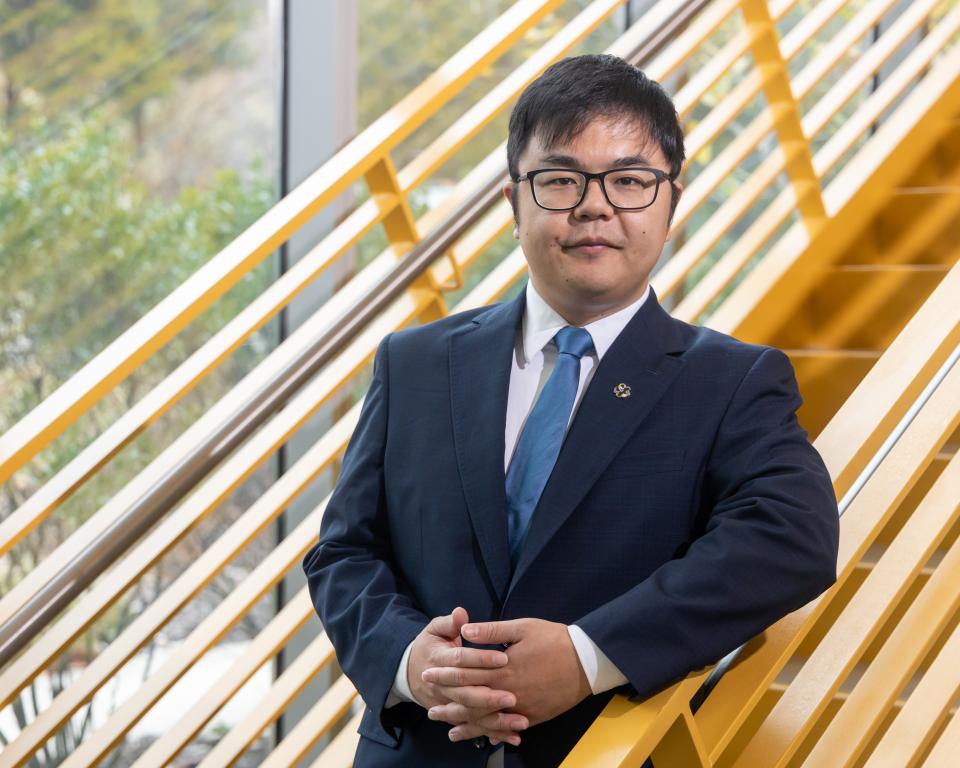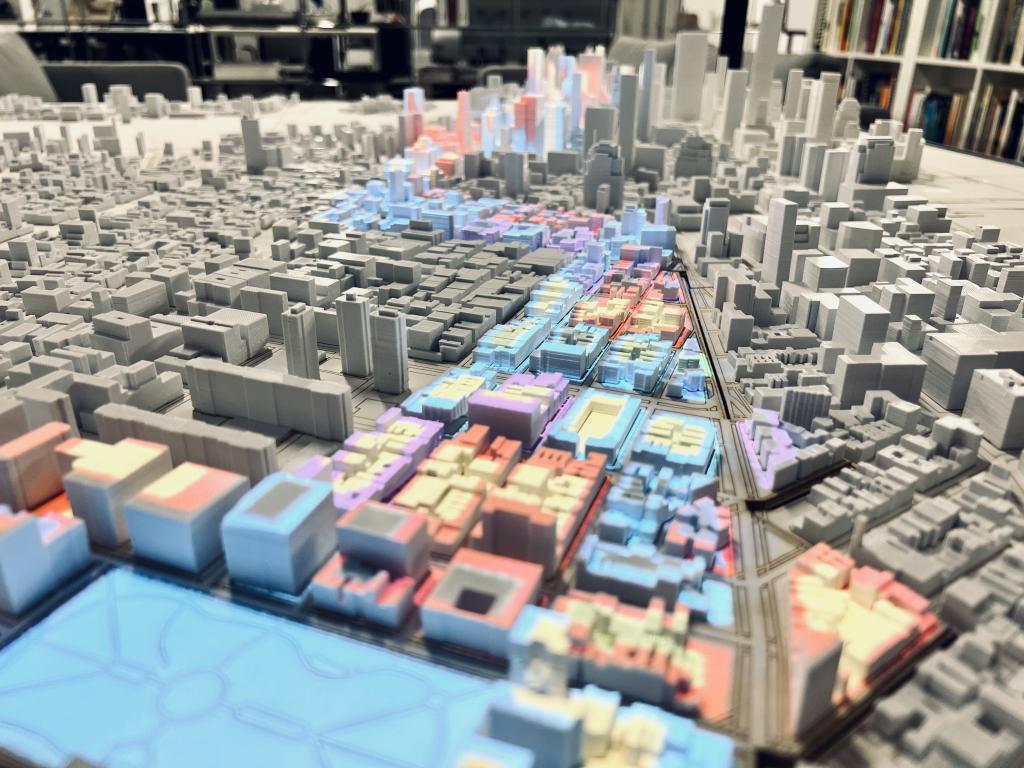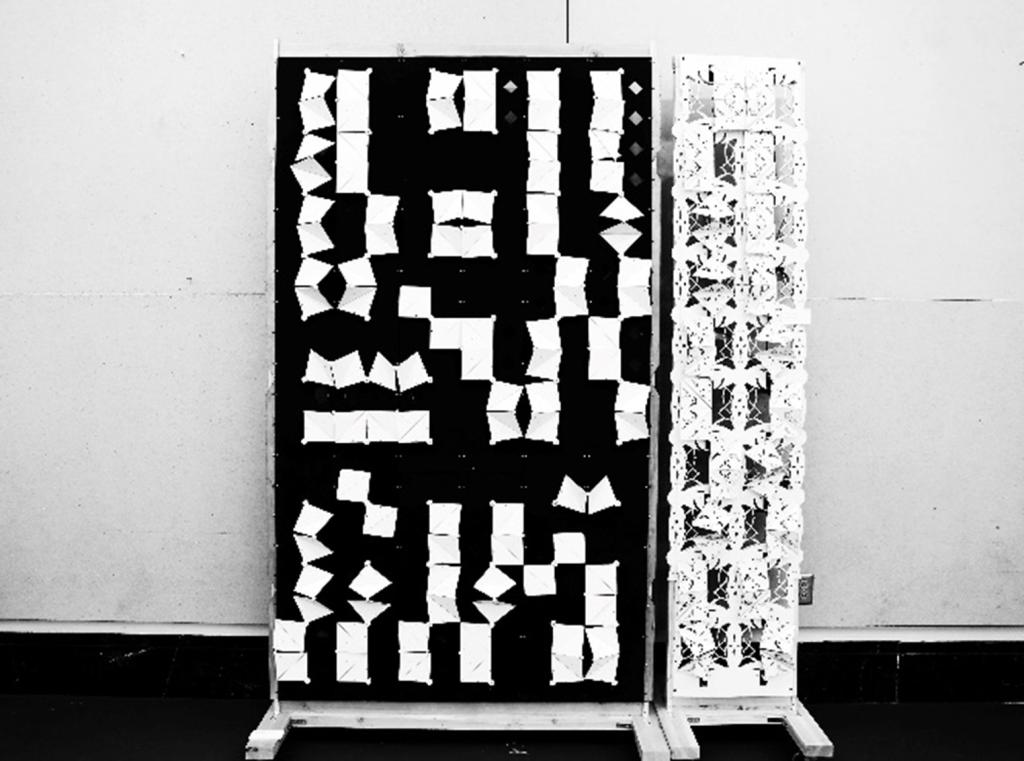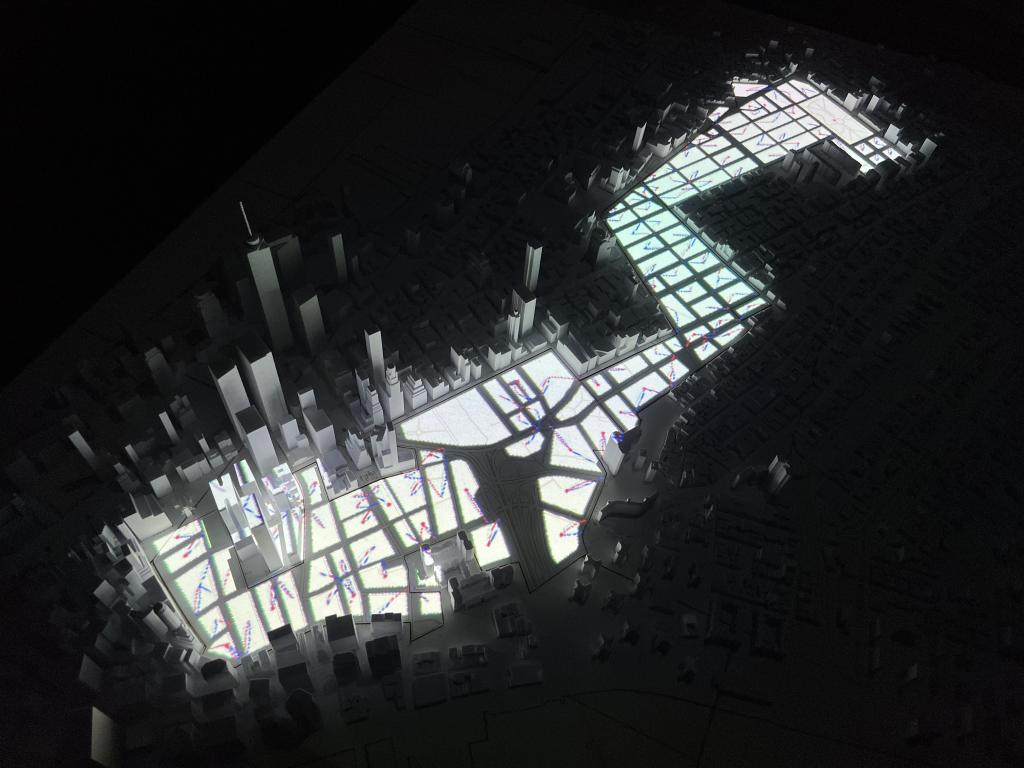
Although he built his career around buildings, Fengqi “Frank” Li likes to break down walls.
Li was trained as an architect, but he doesn’t box himself in. Currently he is working as a computational developer at the Department of Energy’s Oak Ridge National Laboratory. But Li considers himself a designer. To him, that’s less a box than a plane – a landscape scattered with ideas, like destinations on a map that can be connected in different ways.
Those routes can travel through architecture, artificial intelligence, math, sociology, building engineering, clean energy technologies and more. He’s not sure what else yet, because Li doesn’t believe in academic boundaries.
“I’m trying to become a cross-pollinator,” said Li, a postdoctoral researcher in the lab’s Grid Interactive Controls group. “I would like to try to do all kinds of things, yet still be doing just one thing: I’m trying to understand the issue of how cities interact with the environment and the people living there.”

Looking for fresh viewpoints on these questions led Li to his job in ORNL’s Energy Science and Technology Directorate, or ESTD. He learned project management while also developing software and managing datasets for a major ORNL energy modeling initiative: Automatic Building Energy Modeling software, or AutoBEM, which simulates the energy use of almost every building in the United States.
Several months after joining ORNL, Li stepped up to simultaneously handle another vacated role, providing computational support to AutoBEM. Li credits his supervisor, Joshua New, with helping him rapidly learn how to integrate artificial intelligence and real-world parameters, such as privacy protections, into the workflow.
In turn, New has been impressed with Li’s versatility. “He is an enthusiastic learner whose expanding abilities enabled the team to seamlessly deliver results to DOE sponsors and industry partners,” New said. Companies with international reach, such as Google and architectural firm SmithGroup, have collaborated with ORNL to apply AutoBEM to projects that reduce the carbon footprint of buildings by improving materials, design, infrastructure and planning.
A native of the Chinese city of Shangrao, Li earned an undergraduate degree in architecture from East China Jiaotong University. But curiosity about new design perspectives drew him to study abroad, initially at Syracuse University in upstate New York.
“At Syracuse, I really started to understand architecture is not only about building, representation or the geometric transformation of space,” Li said. “It’s also about culture, history and economics.”

‘Architecture as a social device’
But his most formative experience was still to come. At the Cooper Union, a private college in New York City, Li learned to see the city as a system and architecture as a social device. His focus changed from resolving single issues to thinking holistically. In one study, he examined how the decentralized routes chosen by Uber and Lyft drivers altered city transportation patterns, and how those shifts changed people’s activities in different neighborhoods.
Li has applied form and design to problems in diverse ways, ranging from “smart” heat-sensitive fabrics to establishing AI-based software frameworks. He often focuses on how people interact with machines and architectural forms or elements. For example, he designed a lower-limb prosthesis that would “collaborate” with an aging athlete, such as a retired sumo wrestler, by modeling the device and its functions based on body type, movements and daily routine.
International design exhibitions in Italy, China and Estonia included Li’s work in an array of physical and digital forms. For example, an animated, interactive tabletop projection demonstrated the possibilities of local energy exchange. Li’s urban representations may resemble futuristic moonscape drawings, mesh flexing into curving forms, or colorful 3D spikes projecting from a monochrome grid.
An installation called “Dialogue with an artificially intelligent wall” posed questions about how people will communicate with buildings in the future. Li constructed a paneled wall equipped with a microcomputer that could sense the electrical pulses that coincide with human movements. A viewer gesturing to the wall could elicit responses from the panels, which were attached to ball-and-socket joints that allowed them to gesture back with folds and flutters.

Energy flow through the city
During his doctoral research, Li created an urban planning framework incorporating energy infrastructure to maximize a city’s ability to absorb, store and locally share renewable energy. Using a case study that assumed Manhattan buildings had been networked together, the framework included three computational models to optimize energy flow, supply and demand. An interactive physical representation of the city’s buildings, illuminated from the inside, used changing color patterns to show data about types of land use, the pattern of energy flow and the intensity of energy use.
Users could change variables in the computer models to evaluate the impact of different options, such as creating neighborhood energy subcenters to increase electric reliability. The framework is flexible enough to be applied to “territories of extraction” such as abandoned oil wells. In that context, the models could be a tool for designing new cities with equitable access to renewable energy.
“The framework established a new avenue for looking at urban dynamics and architecture as a coherent scenario,” Li said. “I’m trying to use system engineering approaches to resolve architecture and energy infrastructure issues.”
By the time he finished his doctorate in architectural science and built ecology at the Center for Architecture Science and Ecology, or CASE, at Rensselaer Polytechnic Institute, Li knew he didn’t want to join an architecture firm once he began to see buildings as fragments of a city’s system.
Instead, he was attracted to ORNL by the prospect of pursuing his research interests alongside scientists from other fields, striving together to address climate change and urban challenges. Li is already exploring additional research directions, such as working with biologists to tackle city wastewater problems.
“Interdisciplinary collaboration pushes change and creativity,” Li said.
UT-Battelle manages ORNL for the Department of Energy’s Office of Science, the single largest supporter of basic research in the physical sciences in the United States. The Office of Science is working to address some of the most pressing challenges of our time. For more information, please visit energy.gov/science.


